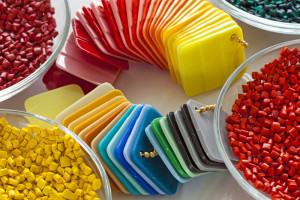
Dyes and pigments play an important role as colorants in the plastic industry. The beautiful pastel shaded plastic store ware or the vividly coloured plastic containers are all a result of dyes and pigments used in their making. Pigment orange, pigment blue, pigment green; you name it and you have an attractive piece of plastic ware with that colour tint in some store or the other. However, in today’s times the scope of pigments and dyes in plastics are not limited merely to lending hues and shades. They also make an impact on sustainability, processability and compliance.
The question often arises as to which among the two; dyes or pigments are best suited for use in the plastics industry. Dyes are used to shade or tint a resin and as such they have to be transparent, strong and exhibit good heat stability. However, dyes are compatible with only a few resins and therefore their use in quite limited in this industry. Pigments on the other hand provide more options to the manufacturer due to their wider chroma range, opacifying ability and better heat stability for a large number of resins. The base polymer actually decides the kind of colorant that will be most suitable for the application. Pigments work best with polyolefins while dyes give good results with polystyrene, polycarbonate and acrylic. All said and done, the basic determining factor for choice of colorant is its compatibility with the base resin. There are a few other factors that have to be kept in mind as well such as the method of dispersion, processing temperature, heat stability, gloss, weather fastness, application etc. A slight error in making the choice can drastically change the features of the plastic and therefore, a good selection of the colorant assumes great importance.
Today, there is more emphasis placed on using pigments that are less toxic and cause minimum harm to the environment. Millions of dollars are spent on research by several organisations in developing such pigments. Their efforts have not gone in vain and one of them has been successful in replacing lead based materials in pigments. Lead chromate pigments were banned from use in consumer plastics and in its place, organic yellow pigments have been developed which have better tint strengths in PVC and polyethylene. Another new development is with respect to pigment blue. The name of the new pigment is YInMn blue which stands for its chemical content namely yttrium, manganese, indium and oxygen. This pigment is also superior to the traditional cobalt blue pigments and has high reflectivity and high ultraviolet absorbance in the near-infrared area.
Colorants contribute to a number of performance aspects in plastics; however, lending colour will always remain their major contribution. When one sees the attractive world of colourful plastic ware one realises the important contribution made by colorants to this industry. At the same time, every individual connected with using and developing colorants for this industry has to try and make a difference to the colouring technology whereby Mother Earth is not harmed in any way whatsoever!